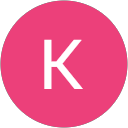
There are two acronyms that pretty much encapsulate everything we do here at Webtek Digital Marketing. Those acronyms are SEO (search engine optimization) and SERP (search engine result page). Whether we are developing a website, launching a digital marketing campaign, or working on a Google ads management project, SEO and SERPs form the foundation.
Sound SEO strategies result in strong SERP performance. But we want to do more than just give our clients good organic results. We also want to take advantage of SERP features on their behalf. The more SERP features we can leverage, the more likely our SEO affords will translate into more paying customers for our clients.
Definition of a SERP Feature
Not sure what a SERP feature is? When you run a typical Google search, the search returns a long list of linked pages that constitute organic results. These are links on the left side of a page that are not attached to ads, maps, or other elements. They are essentially generic results.
A SERP feature is any search result that is not organic. SERP features are ‘extras’ that Google throws in on top of its organic results. These features allow Google to highlight websites and pages whose creators go the extra mile to make their content available to consumers.
Most Important SERP Features for SEO
Every SERP feature supported by Google brings some measure of value to the table. Some features are more valuable to website owners than others. And even that can differ from one to another. As for other search engines, they have their features as well. We tend to focus on Google given that it owns the search market hands down.
Below are descriptions of all the most important SERP features website owners and developers should know about. Rest assured we leverage all of them, as appropriate, on behalf of our clients.
1. Adwords Ads

We mentioned Google ads management in the introduction to this post. Doing so was not coincidental. We mentioned it because Google Adwords ads are perhaps the most well-known SERP feature around. Even people with absolutely no web development or SEO experience are familiar with Adwords ads.
Adwords ads are paid advertisements that appear at the top and bottom of Google SERPs. They appear above and below organic results. Ads are easily identified because they feature a colored label that clearly defines them as such.
2. Featured Snippet

A snippet is a small portion of text taken from a web page and published elsewhere. Google’s featured snippet is a small portion of text designed to return the most relevant results. In almost every case, Google algorithms select featured snippets based on their ability to answer a specific question or provide particular guidance on a given topic.
As Google algorithms have become more sophisticated, they are able to analyze website content and compare its relevance to a question asked by a user. If the algorithm can create a featured snippet for a particular search, that snippet will generally appear just above organic results. It might look like a bulleted list, a numbered list, or even a short description in paragraph form.
3. Image Pack
Although you might not understand all the ins and outs of image packs, you would recognize one on sight. An image pack is a group of search results that appear as a set of horizontally arranged images across the SERP. Each image is linked to the particular site that references it. The interesting thing about image packs is that they can be displayed anywhere within organic search results.
4. Local Pack

For searches deemed local by Google, a SERP will often return what is known as the local pack. You would likely see such a pack if you ran a search on ‘digital marketing near me’. The local pack would consist of a defined box with a map and links to the three most highly ranked local providers of the given product or service.
Local packs are especially important to mobile searches. This is due to the fact that the majority of all mobile searches are local in nature. People use their phones to look for local restaurants, medical providers, etc.
5. Knowledge Card

The knowledge card is actually a presentation of semantic data extracted from a given website. It usually appears at the top of organic results and often takes the form of text combined with a graphic. If you were to search the population of the U.S. in 2021, your search would return a number along with a graph. Organic results would appear underneath this knowledge card.
6. Knowledge Panel

Similar to the knowledge card, the knowledge panel displays semantic information extracted from website content. It normally appears on the right side of the page of a desktop Google search. The most common example of a knowledge panel is one that serves up information on a particular person or topic from Wikipedia.
7. News Box

Google is not only the world-leading search engine but also the internet’s leading server of digitally published news. The company leverages its Google News property to enhance its SERPs. If you were to run an internet search on a topic that is currently getting extensive news coverage, Google might return a news box in the SERP.
The news box is a small box of information with a label that reads ‘In the news’. It typically contains an image along with three or four pertinent headlines. All the headlines are linked to their respective articles.
8. Rich Snippets
Like featured snippets, rich snippets are small portions of content taken from websites. Rather than being designed to answer a question or provide guidance, the goal of a rich snippet is to provide more detailed information about a particular product or service. Rich snippets can appear anywhere within organic results.
9. Related Questions

Google’s related questions card is a small piece of SERP content generated by search algorithms based on a question asked by a user. The intent is to present the user with additional questions people are asking on the same topic – and provide some of the answers at the same time. It looks a lot like a featured snippet and features a combination of organic results. It can appear anywhere on a SERP.
10. Universal Search Results
Universal search results are not a specific SERP feature per se. Rather, it is more the way Google chooses to run searches and present results. Universal search creates SERPs serving all the previously mentioned features on one page, as opposed to serving up just ten organic results.
Why does this matter? Because universal search results change. They are not static. How a given page ranks with universal search depends on the search terms used, the user’s intent and the indexed results Google algorithms have to work with. it takes a lot of knowledge and experience to understand how to rank well with universal search.
There are a few additional SERP features not mentioned here. These include shopping results, site links, in-depth articles, reviews, videos, and tweets. You would likely recognize each one if you saw it.
Leveraging the power of SERP features is a priory at Webtek Digital Marketing. If you’d like to know more about how we can utilize them to improve your site’s search engine performance, don’t hesitate to get in touch with us.
How SERP Features Boost Your SEO Efforts
If it isn’t clear by now, having your website featured on the first page of Google with a SERP feature is really rewarding for your site’s visibility and impressions. Being on the first page of Google is already impactful for your website’s traffic, but having a SERP feature from Google is a confidence-instilling trust signal. It’s simple to achieve once you have a goal in mind that you can create content around.















